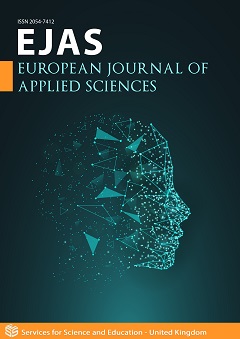Mössbauer Spectroscopy Investigation of Thulium Oxide-Hematite Magnetic Ceramic Nanoparticles
DOI:
https://doi.org/10.14738/aivp.121.16314Keywords:
magnetic materials, nanocomposites, thulium oxide, Mӧssbauer spectroscopyAbstract
Magnetic ceramic nanoparticles system xTm2O3-(1-x)a-Fe2O3 (x=0.1and 0.5) was synthesized by mechanochemical activation starting from hematite and thulium oxide precursors and characterized by transmission Mӧssbauer spectroscopy. The Mӧssbauer spectra were typically analyzed considering 1-3 sextets, corresponding to hematite (with and without thulium doping) and a doublet, representing thulium iron perovskite (thulium orthoferrite). The magnetic hyperfine fields (BHF) and doublet abundance were studied as function of the ball milling time (BMT) for both molar concentrations employed. The results are consistent with the formation of solid solutions in the investigated system. The mixed-oxide nanoparticle system synthesized may have important applications in displays, sensors and photovoltaics, and is paving the way for emerging utilizations related to mechanically flexible electronics.
Downloads
Published
How to Cite
Issue
Section
License
Copyright (c) 2024 Elena Stipetich, Sarah Glasser, Monica Sorescu

This work is licensed under a Creative Commons Attribution 4.0 International License.






